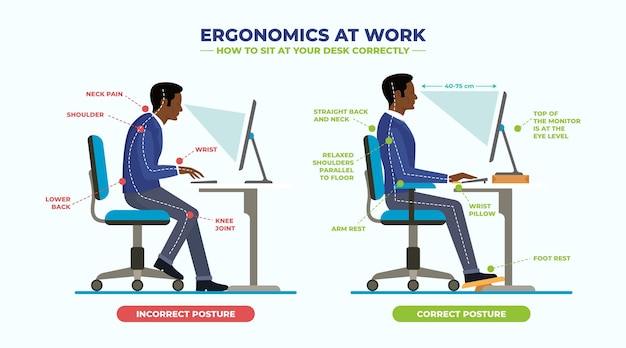Sitting for long hours, poor posture, and minimal physical activity are the silent enemies of office workers. These habits increase the risk of musculoskeletal injuries and lower cardiovascular fitness—especially VO₂ max, a key indicator of heart and lung health. The good news? With a few strategic changes, you can prevent injuries and improve your aerobic capacity, even with a desk-bound job.
VO₂ max measures the maximum amount of oxygen your body can use during intense exercise. A higher VO₂ max means better endurance, improved heart health, and reduced risk of chronic diseases. Unfortunately, sedentary lifestyles can cause VO₂ max to decline by up to 10% per decade after age 30.
For office workers, improving VO₂ max isn’t just about fitness—it’s about energy, focus, and long-term health. The best part? Small, consistent efforts can yield measurable improvements.

Set a timer to stand, stretch, or walk for 2–5 minutes each hour. Simple actions like walking to get water or doing calf raises while standing can reduce stiffness and improve circulation.
Weak core and back muscles contribute to poor posture and back pain. Incorporate exercises like planks, bird-dogs, and seated marches into your daily routine—even at your desk.
Target tight areas: neck, shoulders, hips, and hamstrings. Hold each stretch for 20–30 seconds. Do this in the morning, during breaks, or after work.
Alternating between sitting and standing reduces spinal load. Even 15–30 minutes of standing per hour can make a difference.
Walk at a pace that raises your heart rate for 20–30 minutes, 3–5 times a week. Use stairs instead of elevators and park farther from entrances.
Alternate 1 minute of fast walking or jogging with 2 minutes of slow walking. This boosts VO₂ max more effectively than steady-state cardio.
Climb 2–3 flights quickly, then walk down slowly. Repeat 5–10 times during lunch or breaks.

Perform quick 10-minute circuits: 30 seconds each of jumping jacks, squats, push-ups, high knees, and planks. Repeat 2–3 rounds.
Walk 1 mile as fast as you can. Record your time and heart rate immediately after. Use online calculators to estimate VO₂ max. Repeat every 4–6 weeks.
A lower RHR often correlates with better cardiovascular fitness. Measure it first thing in the morning. Aim for a gradual decrease over time.
Rate how hard activities feel on a scale of 1–10. As VO₂ max improves, the same activity will feel easier (lower rating).
Step up and down on a 6–8 inch platform for 3 minutes at a steady pace. Measure heart rate recovery in the first minute after stopping. Faster recovery indicates improved fitness.
Improving VO₂ max and preventing injuries doesn’t require drastic lifestyle changes. By integrating movement into your day and monitoring progress, you can build lasting health—right from your office chair.

Wellness

Wellness

Wellness

Wellness

Health

Health

Fitness

Wellness

Wellness

Fitness

Fitness

Fitness

Health

Fitness

Health

Health